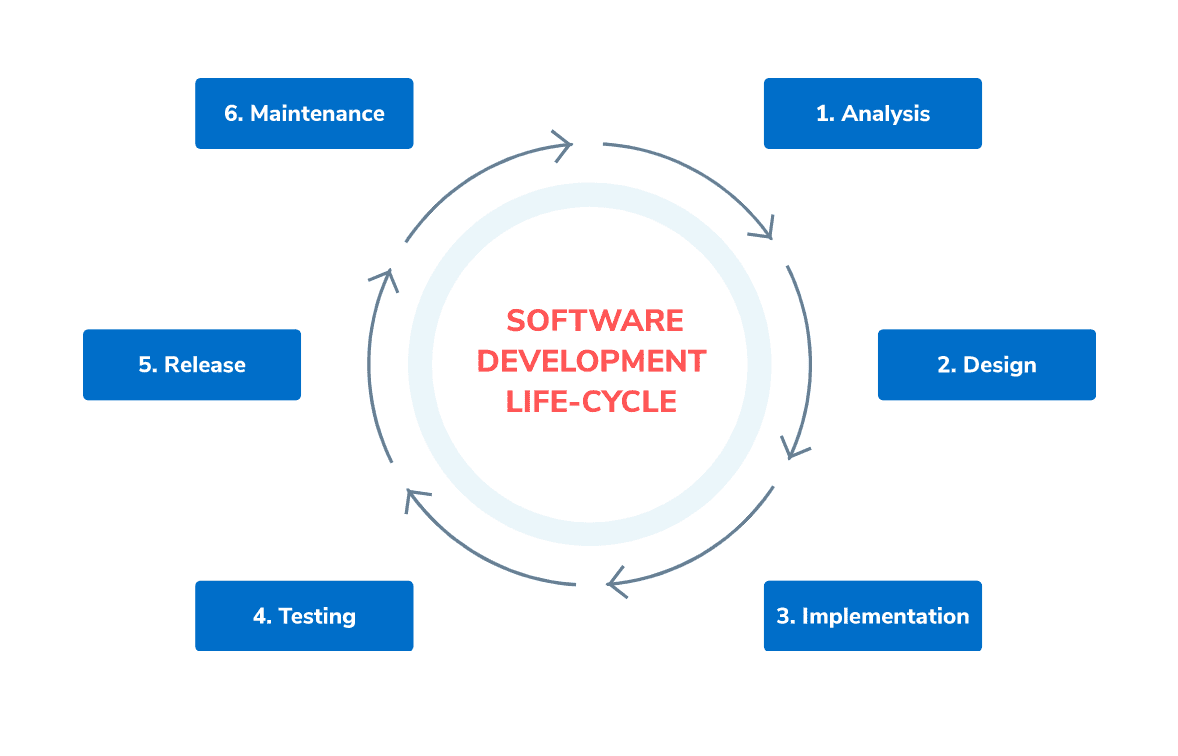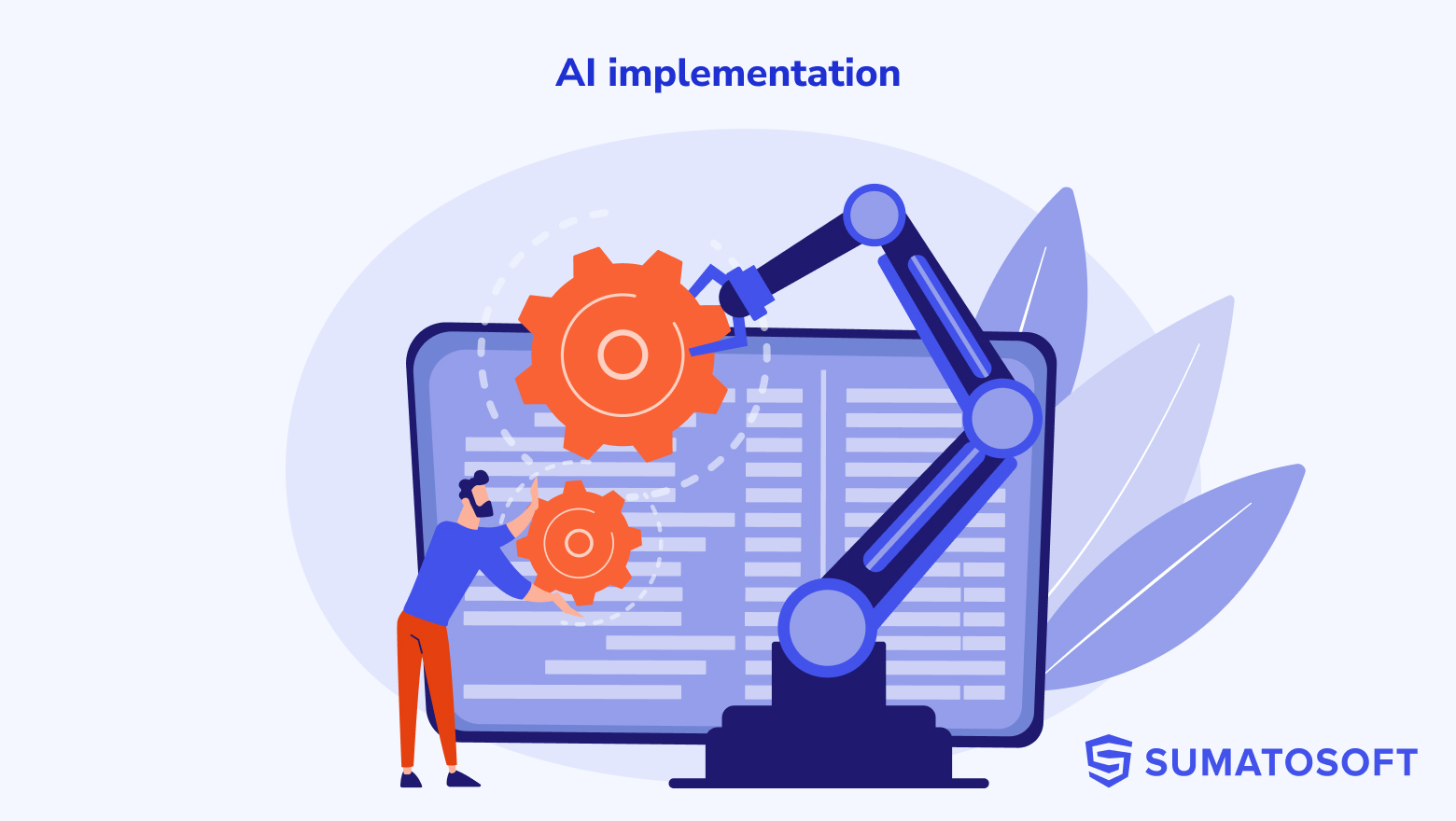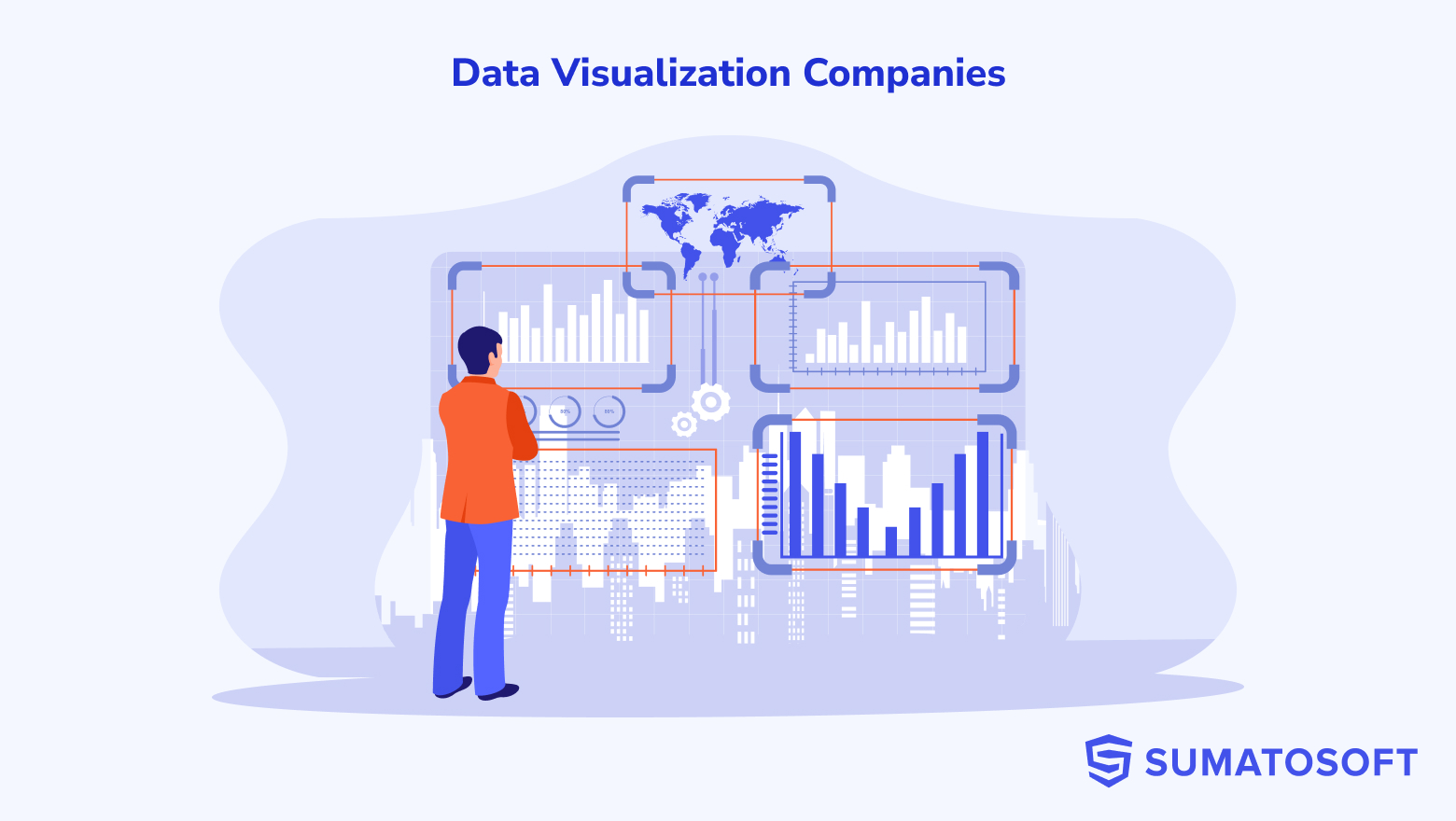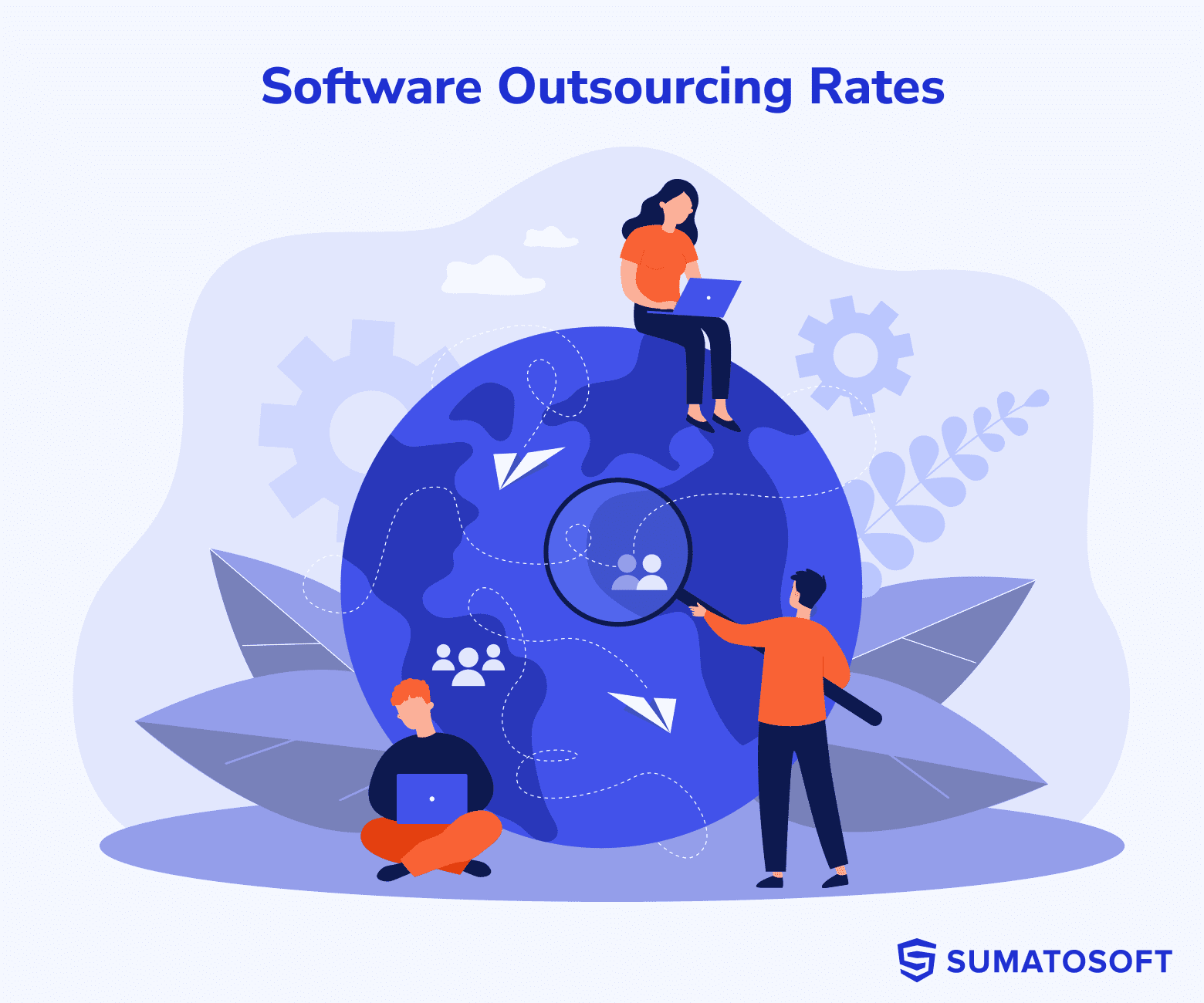What is Software Development?


1. What Software is and Its Types
Nowadays, the software is everywhere.
Programs, software, applications, open-source, freeware, agile, cloud computing – you might have probably heard all these terms.
In the article, we will explain all these terms and some others which are related to the main question of the article: “What is software development?”.
Enjoy reading!
1.1. What does software mean?
Software is a general term used to describe a set of instructions, data, or programs on PCs, mobile phones, tablets, or other smart devices. It is the opposite of hardware, which describes the physical aspects of the computer or other devices.
1.2. Types of software
Programming software
Programming software is a set of tools that can help developers write programs, e.g. compilers, text editors, linkers, debuggers, and interpreters.
System software
System software is the foundation of application software. System software includes device drivers, operating system (OS), utilities, text editors, and compilers, which can help the computer run more efficiently. Besides, It manages hardware components and provides basic non-task-specific functions.
Application software
Application software (or applications, apps for short) is designed to perform certain tasks. Examples of application software include business software (CRM, HRM, etc), SaaS apps, game applications, cleanup software, database systems, etc.
Application software can be a single program or a collection of small programs. This type of software is what consumers most commonly think of as “software.”
Freeware, open-source, commercial software
- Open-source software can be used for free without paying any fees-the latter even provides the source code used to make the program so that anyone can modify or improve it.
- Freeware is a type of software, usually proprietary software, which is distributed to end-users at no cost. Unlike free and open-source software that is usually provided for free, the source code of free software is usually not available.
- Commercial software is designed or developed for licensing or sale to end-users, or commercial purposes.
2. What is Software Development?
2.1. What does software development mean?
Software development (also called application development and software design) is the process of initial research, specifying, data flow design, process flow design, flowcharts, app designing, programming, testing, and debugging.
This process constitutes the various stages of the software development life cycle (SDLC).

2.2. 12 types of software development
Software application development
Software application development is the process of developing a set of computer programs that work on traditional desktop operating systems such as Windows, Mac, or Linux.
Client-side (frontend) web development
The “client” side is something that is displayed to the user (clients). This includes the content that the user sees, such as text, images, and other UI, and any operations performed by the application within the user interface.
Markup languages such as HTML and CSS are interpreted by the client’s browser. The client process is almost always written in JavaScript.
Server-side (backend) web development
“Server-side” refers to everything that happens hidden from the user’s side – the server. Almost all business logic runs there, including rendering dynamic web pages, interacting with databases, identifying certifications, etc. Businesses often have to seek custom web development services to build a platform that will meet their business requirements.
Mobile development
Mobile development or as now often referred “application development” or “app development” involves the creation of applications that run on mobile devices such as iOS or Android mobile operating systems, and more recently the Windows 10 platform.
API development
API development or application programming interface development is the process when software developers make special programs that act as linkers across different software components on desktops, mobile devices, and the Web. API development is the basis of standard processes, types, tools, GUI interaction methods, and database access rules, and programmers who build other applications can use it for this specific API.
Embedded software development
Speaking about what is software development we should mention embedded software. With the rise of the Internet of Things technologies and ecosystems, embedded software development is booming. This type deals with the coding skills required for embedded systems such as Raspberry Pi, Arduino, and Beaglebones. Embedded software is dedicated to specific software running on your machine or equipment.

Database development
Almost all software applications require a database and organized data collection. A database management system (DBMS) is software that interacts with end-users, applications, and the database itself to capture and analyze data. Software developers use DBMS to set up and tune new and legacy applications.
Cloud computing
Cloud services use a remote server network to store and manage data instead of using personal computers or local servers. Software developers involved in cloud computing software development have developed software that supports cloud storage applications, such as Amazon Web Services (AWS), OneDrive storage, and GitHub.
Security software development
Penetration testers (“white-hat” ethical hackers) and cybersecurity experts work together for the benefit of the company and its systems and data. The cybersecurity team develops software to protect important company assets from theft, viruses, and other malicious attacks.
The penetration tester then attempts to “hack” the system to find the location of the vulnerability or weakness.
Data Science development
Big data sets are of no value to anyone unless you know how to deal with them. That’s where data scientists come in-they can find value in the data. To obtain valuable and actionable insights, data scientists need to use analytical methods to mine and manipulate data loads.
Consider processing large data sets, possibly using a certain cluster computing method, and then develop scientific applications based on the findings of the data.
Machines need a lot of data to “learn” to “make their own decisions” in a given situation, and data science ensures that this data is presented in the correct form for use in AI applications.
Software tools development
This type of development builds software tools for other software developers to test their code. In addition to simple testing, the development of this software will also ensure that other developers’ code meets industry standards and maintains maintainability.
Developing programs to test other programs is never easy, and technology giants like Microsoft and Google hire software developers to design applications to test other projects on the go.
Low-code and No-code development
Currently, one of the trends in software development is the appearance of low and no-code solutions and approaches that simplify the work of software developers.
The Low Code Development Platform (LCDP) provides a development environment that is used to create application software through a graphical user interface and configuration instead of traditional hand-coded computer programming. The low-code model allows developers of all levels of experience to create applications using a visual user interface combined with model-driven logic. The low-code development platforms reduce the amount of traditional manual coding, thereby accelerating the app’s delivery.
No-code platforms are designed to be user-friendly and do not require any necessary development knowledge. As a result, anyone in the company can take advantage of the no-code app builder to create applications that they can easily use. Prominent examples of no-code platforms are Elementor, Airtable, Jotform Apps and Retool.
In addition to creating compelling app interfaces, using cutting-edge no-code technologies like Xano, you can even build complex and scalable backends. Experienced Xano developers can help you scale your backend and implement customer portals, partner apps, or internal tools without code 2X faster.
3. Software Development Process and Methodologies
3.1. What is software development life cycle (SDLC)?
SDLC, also known as Application Development Life Cycle, provides international standards that software development companies can use to build and improve their software applications. It provides development teams with a defined structure for them to follow the process of designing, creating, and maintaining high-quality software. The purpose of the software development process is to build an effective product within a budget and timeline.
The SDLC contains a detailed plan that explains how to plan, build, and maintain specific software. Each phase of the SDLC life cycle has its own process and deliverables. In most cases, we define from 6 to 8 phases.
SDLC is a way to measure and improve the development process. It allows fine-grained analysis of each step of the process. In turn, this helps the company maximize efficiency at every stage. Companies today must reduce costs, deliver software faster, and meet or exceed customer needs. SDLC helps achieve these goals by discovering inefficiencies and high costs and making them run smoothly.
Why SDLC?
- It provides the basis and framework for project planning, planning, and estimation;
- It allows correct project tracking and control;
- It improves the visibility of the project plan to all stakeholders;
- It increases and improves development speed;
- It Improves customer relations;
- It helps you reduce project risk and project management plan overhead.
8 phases of software development process
The topic about what is software development would be incomplete if we don’t consider the phases of the software development process. The entire SDLC process is divided into the following stages:

Phase 1. Requirements collection and analysis
The first step in the SDLC process is requirements collection and analysis. It should be carried out by senior team members and based on opinions from all stakeholders and domain experts in the industry. At this stage, it is also necessary to plan for quality assurance requirements and identify the risks involved.
At this stage, you can have a clearer understanding of the entire project scope and the expected problems, opportunities, and instructions that trigger the project. Based on these requirements, the software development team also prepares the software development effort estimation
Phase 2. Feasibility study
The next standard step is to define and document the software requirements. This process is carried out with the help of the “Software Requirements Specification” document (also known as the “SRS” document). It includes everything that should be designed and developed during the project life cycle.
Download our guide about the best practices applied in Business Analysis, how Discovery Phase should be done in the right way, and the benefits businesses can get from Business Analysis
There are five main types of feasibility checks:
- Economy: Can we complete the project within the budget?
- Law: Can we handle this project under cyber law and other regulatory frameworks/regulations?
- Operational feasibility: Can we create the operation expected by the customer?
- Technology: Need to check if the current computer system can support the software
- Schedule: Determine if the project can be completed within the given schedule.
Phase 3. Software design and architecture
System and software design (don’t mess with UX/UI design or graphic design here) documents are prepared according to requirements specification documents. This helps define the overall system architecture. This design phase is used as input for the next phase of the model.

Two design documents are made at this stage:
High-level design (HLD), software architecture
- Brief description and name of each module
- Overview of the functions of each module
- Interface relationship and dependency relationship between modules
- Identify database tables and their key elements
- Complete architecture diagram and technical details
Software architecture is about making basic structural choices, and once implemented, the cost of changing these choices is high. The choice of a software architecture includes specific structural options in software design and development possibilities.
Low-level design
- Functional logic of the module
- Database table, including type and size
- Full details of the interface
- Solve all types of dependency problems
- List of error messages
- Complete input and output of each module
Phase 4. Prototyping and/or interface design
Sometimes prototyping can be considered as a part of the Design phase. The prototype is like one of the early versions of the software in the iterative software development model. It demonstrates the basic ideas about how the application looks and works. This “hands-on” design can be shown to stakeholders. Use feedback to improve the application. It is cheaper to change the prototype stage than to rewrite the code to change the development stage.
Also, some specialists add the UX/UI phase here as part of this Phase.
Read our previous article about design thinking:
What Design Thinking Is and How It Is Used in Software Development
Phase 5. Programming
At this stage, developers begin to build the entire system by writing code in the selected programming language. In the coding phase, tasks are divided into units or modules and assigned to individual developers. This is the longest stage in the software development life cycle process.
At the programming stage, software developers need to follow certain predefined coding guidelines.
Phase 6. Software testing
After the software is completed, it can be deployed in a test environment. The QA team begin to test the functionality of the entire system. This is done to verify whether the entire application can work according to customer requirements.
At this stage, the quality assurance and the testing team may find some errors/defects and communicate with the developers. The development team fixed the error and then sent it back to quality assurance for retesting. This process will continue until the software is defect-free, stable, and runs according to the business requirements of the system.
Read our previous article about software testing pitfalls:
What’s Hiding under the Water: Testing as the Backbone of Qualitative Software
Phase 7. Software deployment
Once the software testing phase is over and there are no errors or errors in the system, the final deployment process will begin. Based on the feedback from the project manager, release the final software and check for deployment issues.
Phase 8. Software maintenance
Once the system is deployed and the customer starts to use the software, the following 3 activities will occur:
- Bug fixes
- Software upgrade
- Enhanced and new features implementation
The main focus of this SDLC phase is to ensure that the requirements continue to be met and that the system continues to operate under the specifications mentioned in the first phase.
3.2. What are software development methodologies?
There are many software development methodologies (models) used and tested for the past 70 years.

Agile model
If we hear a question “what is software development and how to do it in the right way?” the answer will probably contain information about the Agile development model. Agile methodology is the most popular practice today that promotes continuous interaction between development and testing in the SDLC process of any project. In agile software development methods, the entire project is divided into small incremental builds. All these builds are provided in iterations, and each iteration lasts one to three weeks. The most popular Agile methodologies are Scrum and Kanban.
Waterfall model
The waterfall is another widely accepted SDLC model. In this method, the entire process of software development is divided into various stages of SDLC. In this SDLC model, the result of one stage is used as the input for the next stage.
This SDLC model is document-intensive, and the early stages record the operations that need to be performed in the subsequent stages.
Incremental model
The incremental model is not a stand-alone model. It is essentially a series of waterfall cycles. At the beginning of the project, the requirements are divided into groups. For each group, follow the SDLC model to develop software. The SDLC process is repeated, with each version adding more features until all requirements are met. In this method, each cycle acts as a maintenance phase for the previous software version. Modifications to the incremental model allow overlapping development cycles. The next cycle after that can start before the completion of the previous cycle.
V model in SDLC
In this type of SDLC model testing and development, this phase is planned in parallel. Therefore, there is a verification stage for SDLC on one side and a verification stage on the other side. The V model is added through the coding stage.
Spiral model
The spiral model is a risk-driven process model. This SDLC model can help the team adopt one or more process model elements, such as waterfall, increment, waterfall, etc.
The model adopts the best features of the prototype model and waterfall model. The Spiral methodology is a combination of rapid prototyping and concurrent design and development activities.
There are also other models and methodologies in software development that are not so popular as the ones described above.
- Aspect-oriented software development
- Cleanroom Software Engineering
- Incremental funding methodology
- Rapid application development
- IBM Rational Unified Process
- Extreme programming
- Bing Bang model
- Test-driven development (TDD)
4. Tools
The software development toolset is very wide now. There are hundreds or even thousands of various tools – languages, frameworks, databases, etc that software developers can use to create applications.
The toolset depends on the type of software development, the type of SDLC it is used, and some personal preferences. We made a brief overview of tools that can be used below.
Languages & tools you should know if you are planning to become a software developer
| Type | Languages & Tools Samples |
|---|---|
Software Application Development |
|
|
|
Web Backend Development |
|
Mobile Development |
|
Embedded Software Development |
|
Databases |
|
Cloud Software Development |
|
Data Science Development |
|
BI & Reporting |
|
Monitoring |
|
Project Management Tools |
|
Communication Tools |
|
Other Tools |
|
In Conclusion
We examined different aspects of the question “what is software development”.
On the one hand, the software development area is rather new and very fast developing and there are still many fields that don’t have some standards or regulations (like careers), however, on the other hand, there are many best-practices tested and defined, especially in terms of processes and methodologies of software development.
Software development languages, frameworks, tools, and instruments will change, however, we can say that the foundation for the delivery of quality software has already been laid.
Let’s start
If you have any questions, email us info@sumatosoft.com




